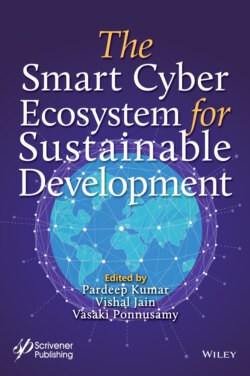Читать книгу The Smart Cyber Ecosystem for Sustainable Development - Группа авторов - Страница 56
2.7.1.2 Channel Access and Assignment
ОглавлениеThe effective use of wireless channels has become an urgent necessity, as many heterogeneous systems operate in the same frequency band. Thus, coexistence and organized access of the shared frequency chunks by systems are necessary. Consequently, any design of the wireless channel sharing mechanism should be based on a prediction of the behavior of networks users.
In [17], the authors propose deep reinforcement ML-based MAC protocol for the coexistence of multiple heterogeneous networks. The method allows time-sharing access of the spectrum, by a series of observations and actions. The MAC protocol does not have to know the MAC mechanism of other networks and tries to maximize the throughput of all coexisting networks. The authors of [18] employ reinforcement learning for managing cell outage and compensation. The system state is constituted by the allocation of users to the resources of cells and the channel. Actions are related to the power control, while the rewards are quantified in terms of SINR improvement. The authors show that such ML-based approach provides improved performance.
In [19] and [20], the authors use clustering algorithms to group users that share common interests to reduce interference and collisions. The authors show that such clustering improves the access opportunities for wireless users. A cluster header (CH) is selected to collect data from all devices. It sends the data to base stations which schedule the transmission.
Channel assignment is a well-known challenging issue in wireless networks, especially with systems of limited channels. Such systems highly suffer from interference, and the optimal selection of channels becomes important. Channel assignment problems are normally formulated as convex optimization problems, where algorithms needed to solve such problems are computationally complex. In a dynamic environment of wireless networks, understanding the behavior of network users and learning from previous data is expected to be a good approach for improving channel assignment mechanisms.
The paper of [21] uses ML approach to tackle the channel assignment problem and developed a computationally efficient solution for this problem. The objective is to maximize the total data rate experienced by all users assuming limited resources and large number of network users. The convex optimization problem is converted to a regression problem. Ensemble learning is utilized to combine different machine learning models and improve the prediction performance.
